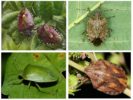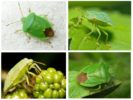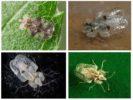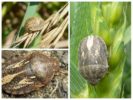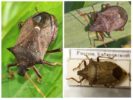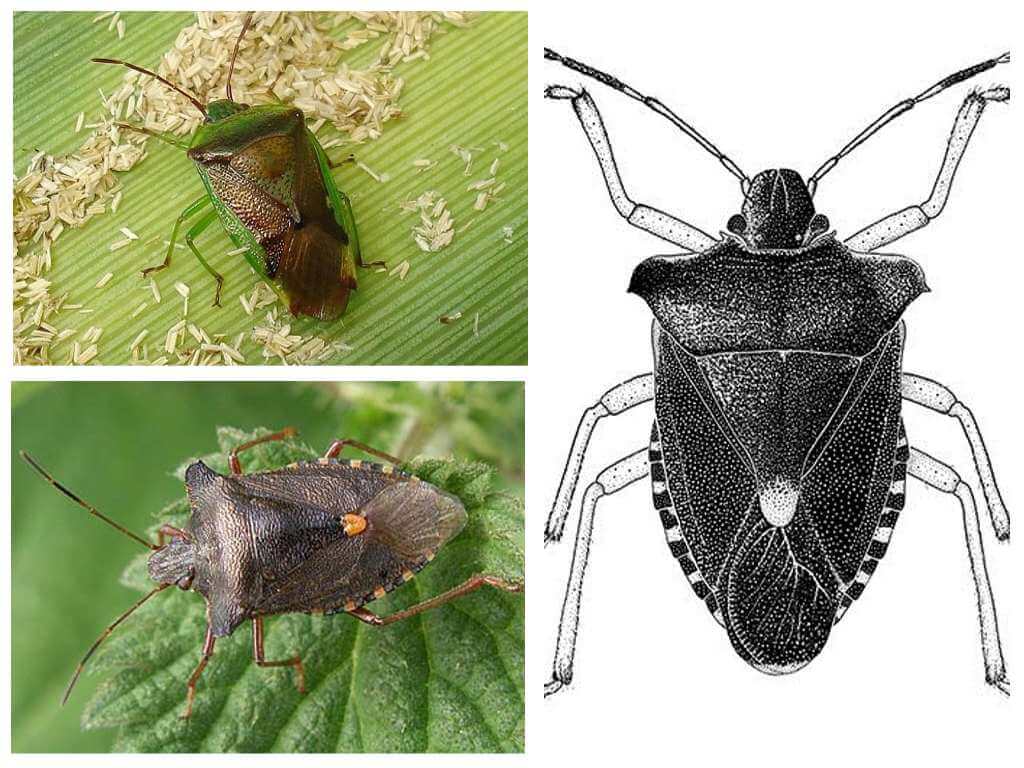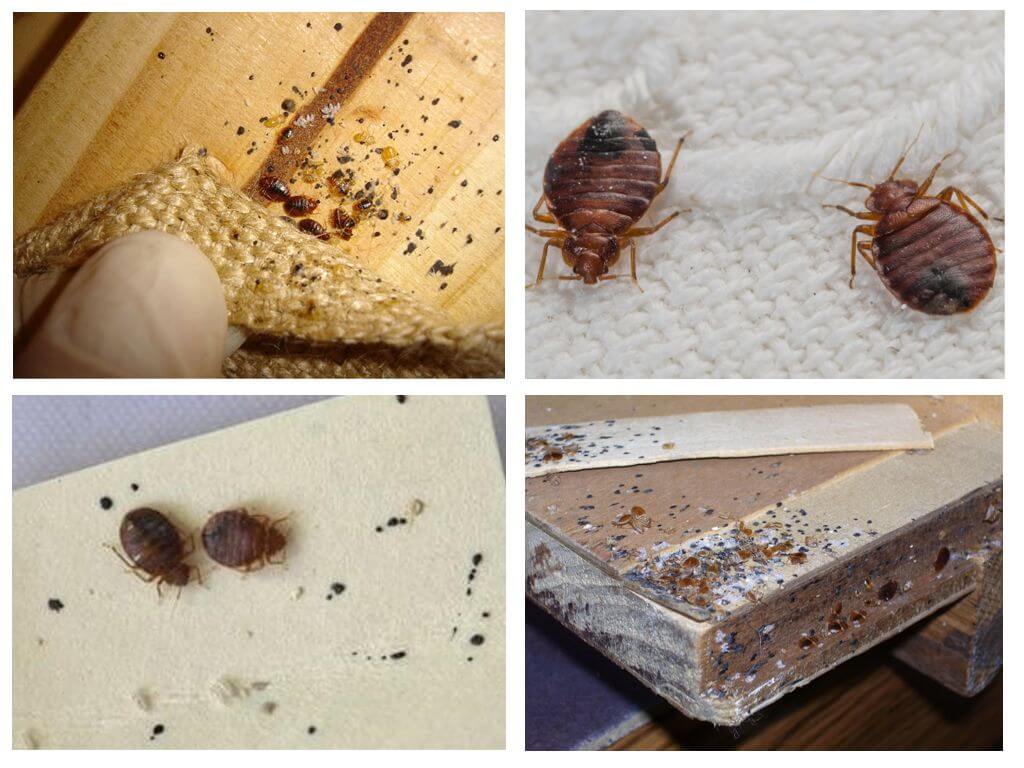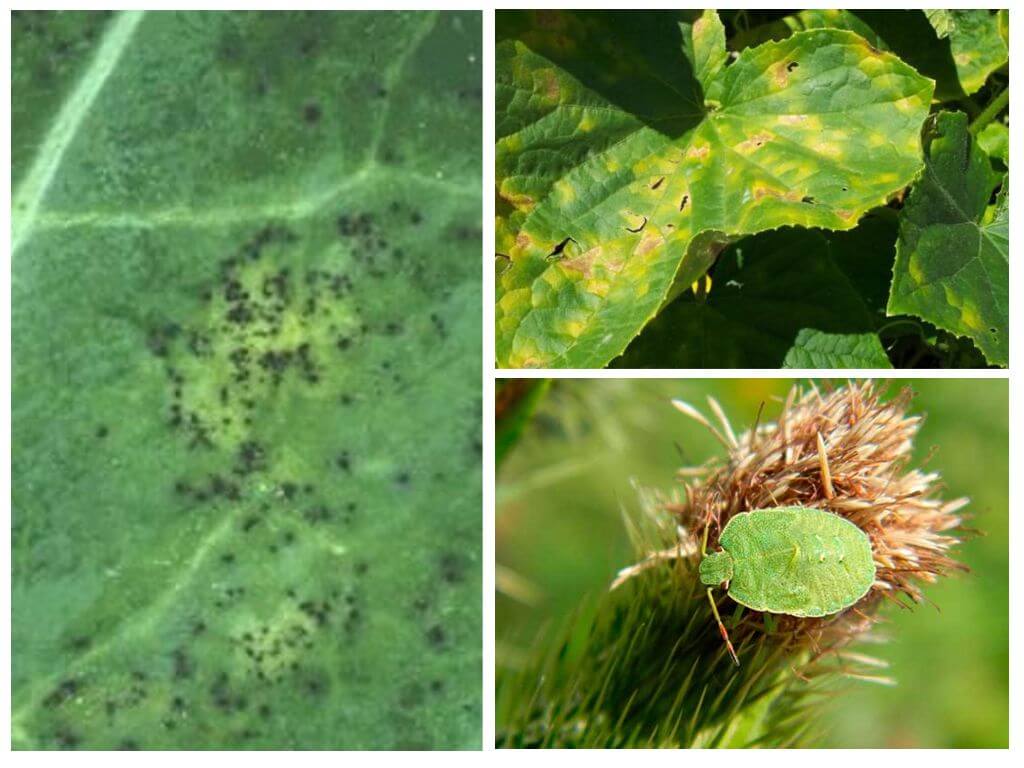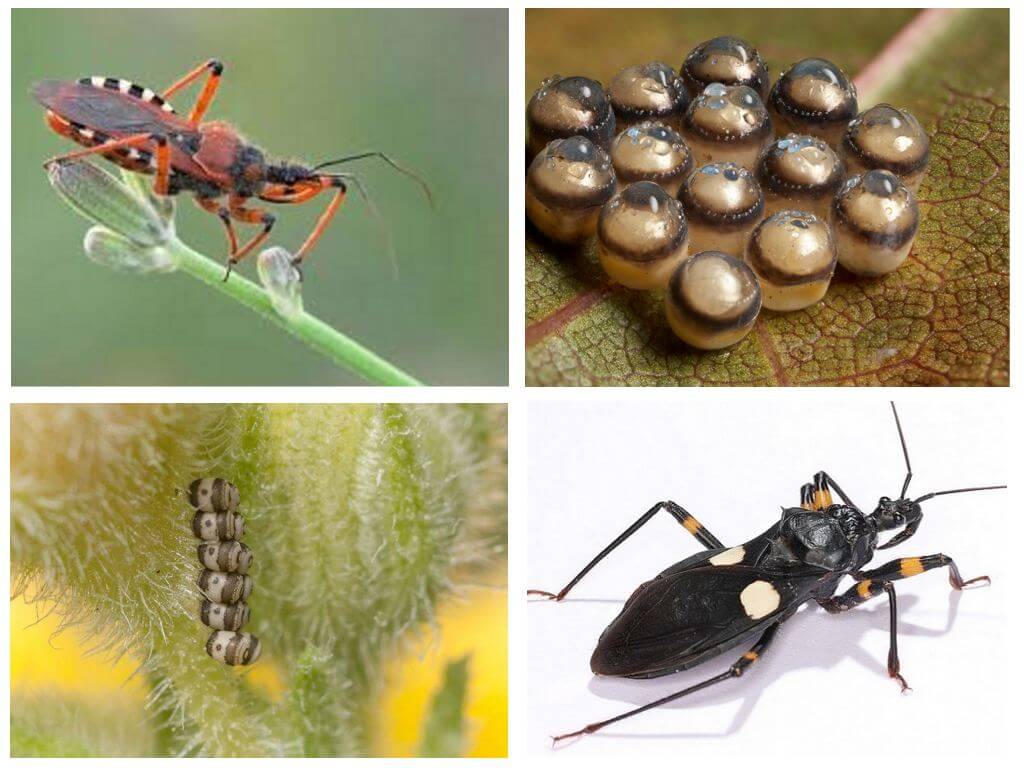- Garden bugs
- Forest Shield
- Berry bug
- Pear Lace
- Bug bug
- Picromerus
- Bedbug Remedies
Garden bugs - this is the collective name that refers to all those who live in gardens bug bugs. Representatives, as they are also called, of garden bugs are divided into several dozen species, differing in color and body shape. Below you can see what a garden bug looks like in the photo.
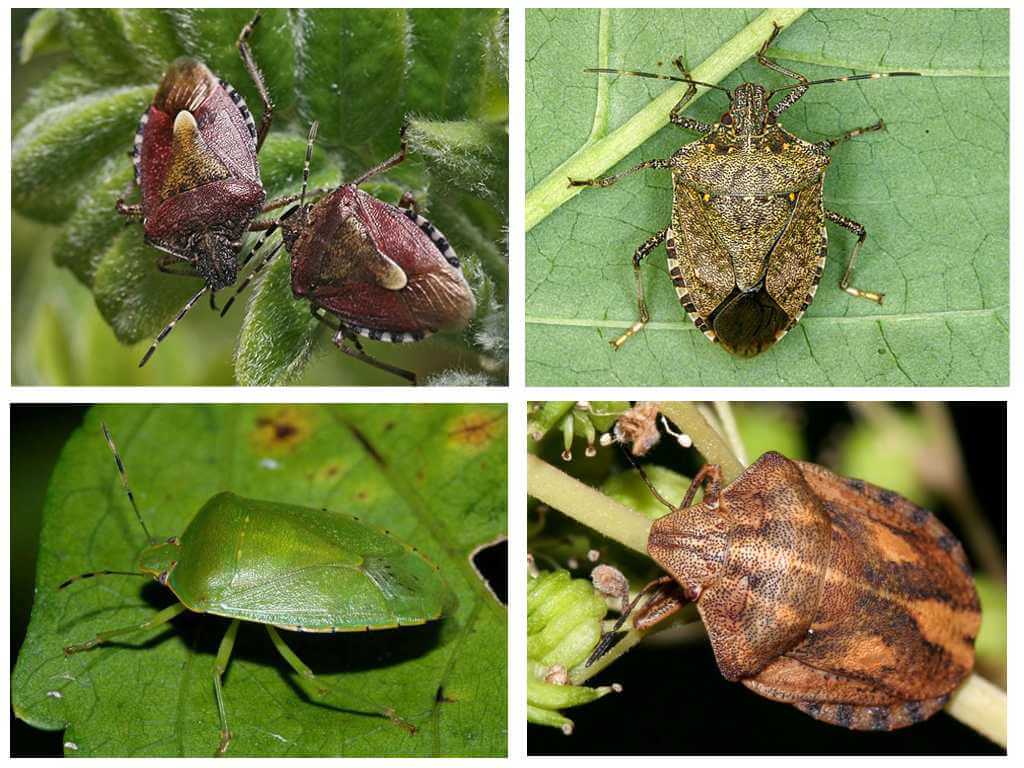
For the most part, garden bugs prefer to live in areas planted with cultivated plants. Some types of insects are useful for humans, being exterminators of pests. Others, on the contrary, are capable of causing tremendous damage to the owners of gardens and vegetable gardens, eating the juices of plants and fruits. As a result, brown spots form on the leaves, which become larger with time. The consequence of attacks by garden pests is the slow growth of plants, and even their death.
Insect pests
In nature, there are a large number of harmful garden bugs. Conventionally, they can be divided into two groups:
- country bugs - parasitic only on fruit and berry plants;
- plant pests - they feed on the foliage of wild plants and can easily switch to garden crops.
Green Forest Shield
Forest bugs many summer residents call green garden bugs. The size of an adult reaches a length of up to 1.5 cm. The body is bright green in color and has slightly noticeable notches along the edges. Forest bug bugs breed in feeding places so that the larvae hatching from the eggs do not have to look for food for a long time. The female lays about a hundred eggs, attaching them very tightly to the stems of plants. After 1.5 weeks, larvae emerge from them, which turn into adults within 30 days.
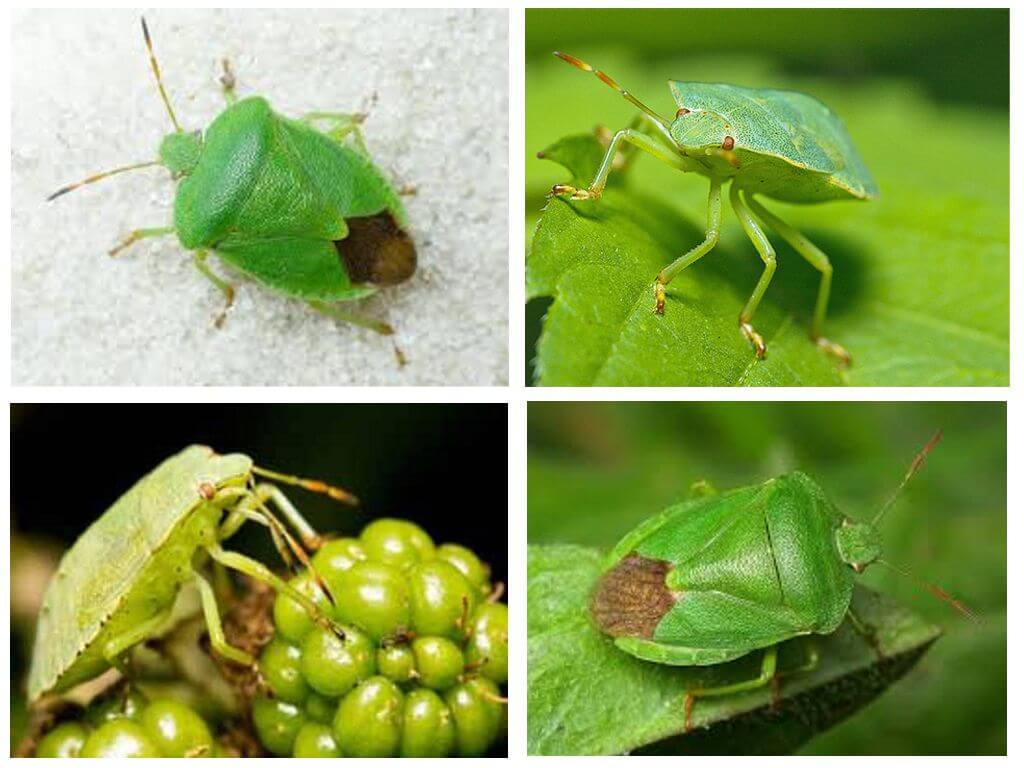
Green bugs live on trees. Wild and parkland are the main source of nutrition. However, very often with such garden bugs can be found in the garden and garden. First of all, the pest attacks raspberry bushes, there can also be bedbugs on currants. Do not disdain the shield bug and herbaceous plants.
Eurydem North
The garden cruciferous bug or northern eurydem is one of the most dangerous pests, whose body size does not exceed 8 mm. Its bright coloring and beautiful pattern on the back are very reminiscent of appearance bug soldier, but the size of the harm they cause is much more tangible. The mustache of the insect is covered with short hairs. Massively cruciferous fleas increase their population in hot weather, as a result of which they can destroy the planted cabbage or other seedlings in just a few days.
Such garden bugs plant pests eat leaves of radish, cabbage, radish and other vegetable crops. Insect attacks rarely withstand any plantings.
Berry shield
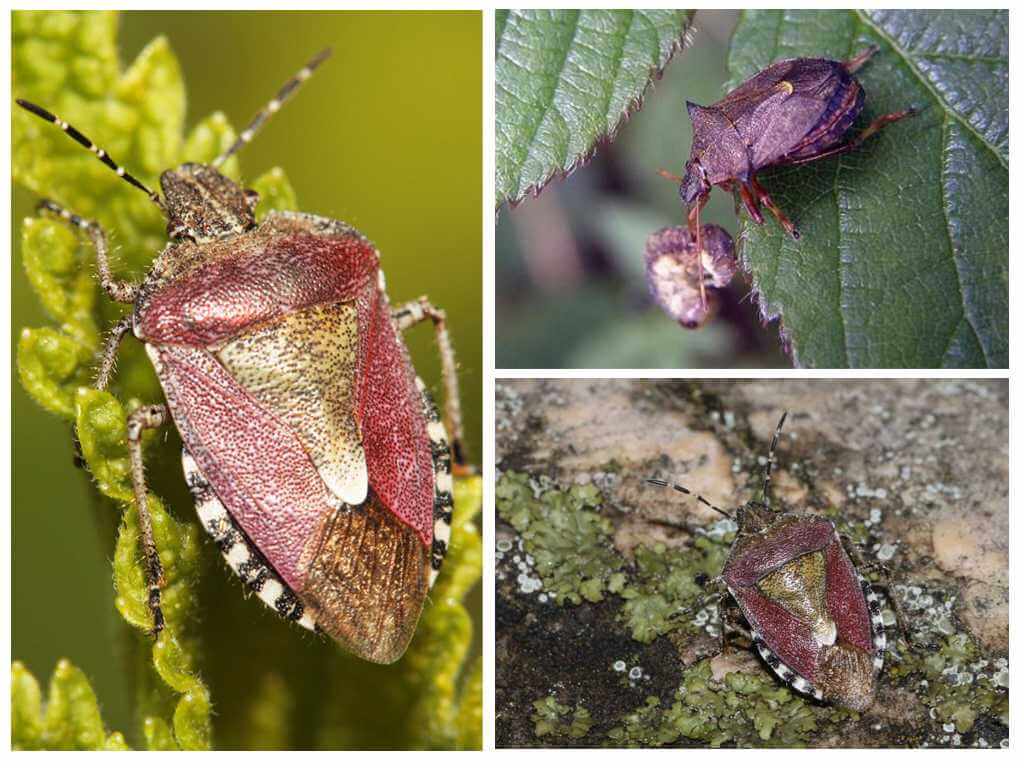
This garden bug is known to many as a shield bug stinky. The insect has a bright burgundy color. One of its distinguishing features is bad smell, which is allocated to them upon contact.The female is able to lay up to 400 eggs with a hard coating and yellowish hairs. The pest goes through 5 stages of development. And after the first two, its black body acquires a burgundy color, and the abdomen becomes yellow. Winter berry shield spends in an imago stage, and wakes up only in the middle of spring.
On a note!
Garden berry bugs inhabit mainly bushes. Bed bugs on raspberries or gooseberries eat not only the leaves of plants, but also the berries themselves, making them unsuitable for food.
Cucumber bug
One of the smallest insects of this family, whose black body does not exceed 3 mm. However, this does not prevent him from jumping well. A garden pest cannot always be noticed, since it settles mainly on the underside of a leaf plate. The plant parasite lays eggs in the second half of summer, remaining wintering in this form. The larvae that appeared in May settle on the lower part of the leaf. A garden bug can infect entire greenhouses by eating seedlings of cucumbers, sweet peppers, eggplant and tomatoes.
Pear Lace
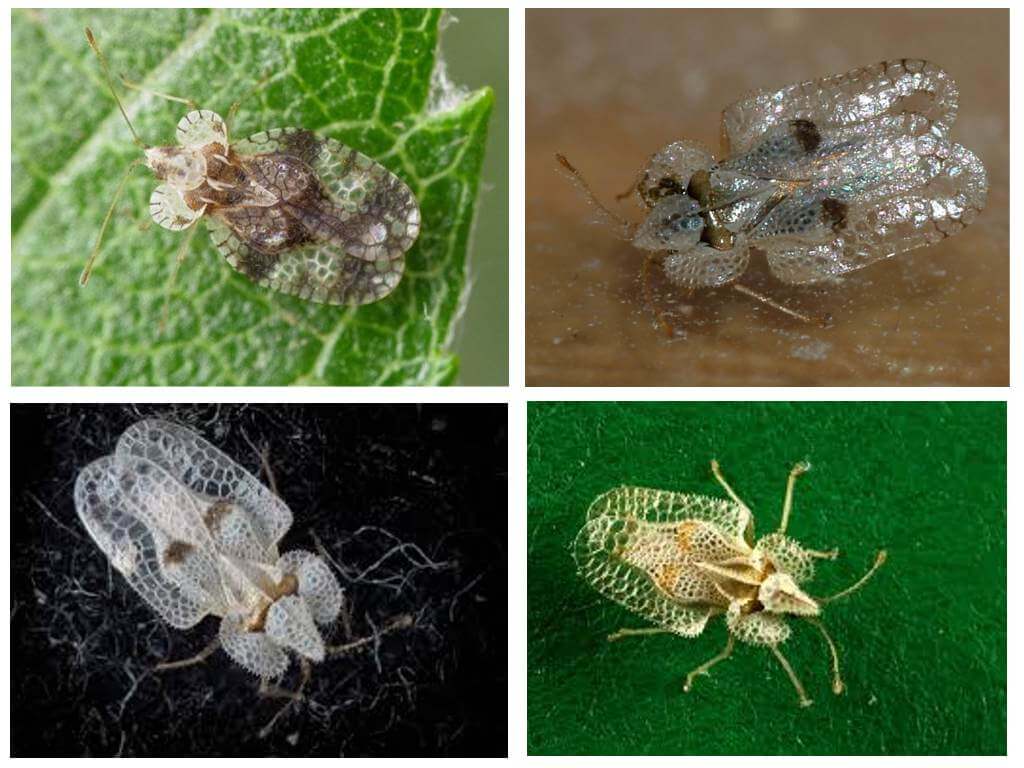
Many are surprised by the appearance of this garden pest. The nondescript body of beige shades has lace edges, the pattern of which repeats the pattern of the back. An individual develops according to an incomplete type. Insects are very prolific - the female can lay up to 400 eggs. It will take about 4 weeks to turn the larvae into an adult.
By the name of this garden insect you can determine your favorite habitat, they are pears, apple trees, apricots, plums and other fruit trees.
Bad bug bug
Another garden representative, who is the worst enemy of agriculture. Bad bug bug - a relatively large insect, whose body dimensions reach up to 13 mm. He was given that name because his color is very similar to the land tortoise. Developed wings enable the insect to travel long distances. The life expectancy of the pest is no more than 11 months. The plant bug propagates very quickly - in one season the female manages to lay about 15 ovipositions.
The question of what garden bugs of this species eat will arise for everyone who finds a similar individual in his garden.
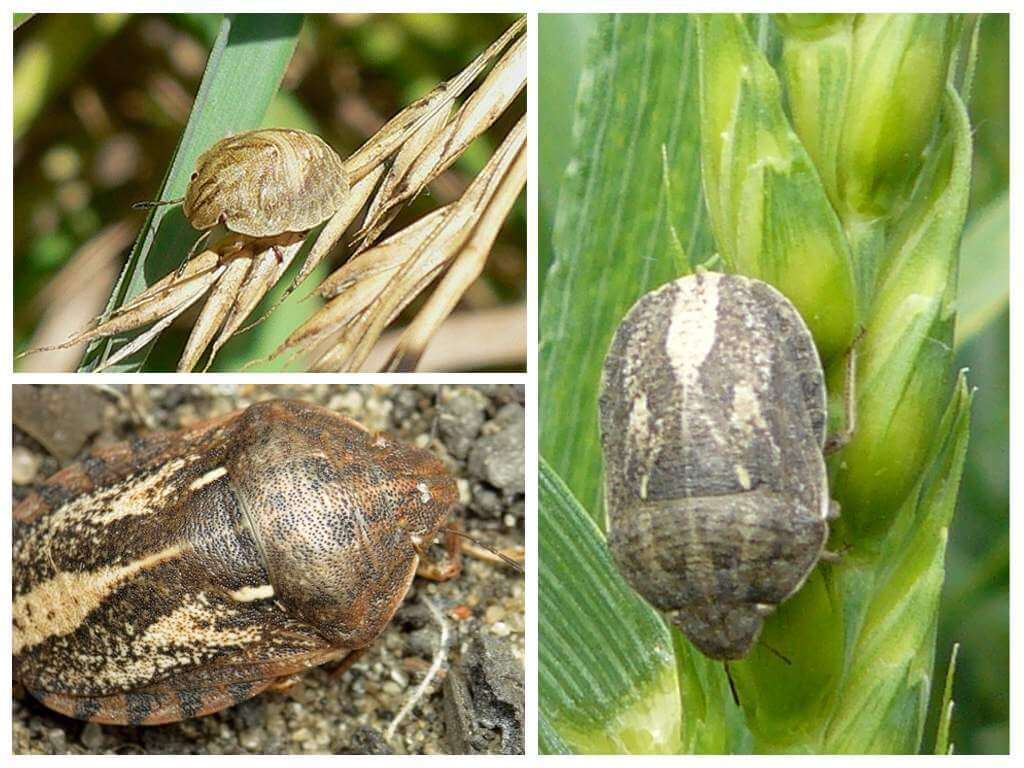
On a note!
Due to the fact that the insect feeds on cereals, it does not pose a danger to garden crops. But the damage to cereal plantations harmful turtle can inflict colossal. However, in the absence of habitual food, the pest is able to easily replace it with nearby garden seedlings.
About useful bugs
However, not all garden bugs are harmful to humans. Some of their varieties benefit garden crops. Predatory bugs - the so-called enemies of harmful insects. Therefore, to preserve the garden plantings, it will not be superfluous to know how useful predator bugs are.
Bicentennial perilus
Bedbug Perillus is a serious threat to the Colorado potato beetle. A predatory bug hunts not only the pest larvae, but also destroys its oviposition. Caterpillars of many butterflies and leaf beetles are also his favorite delicacy. This type of garden "protector" was brought to Europe from North America, but it cannot survive our harsh winters. Small populations of the outburst were found only in the Krasnodar Territory.
Picromerus
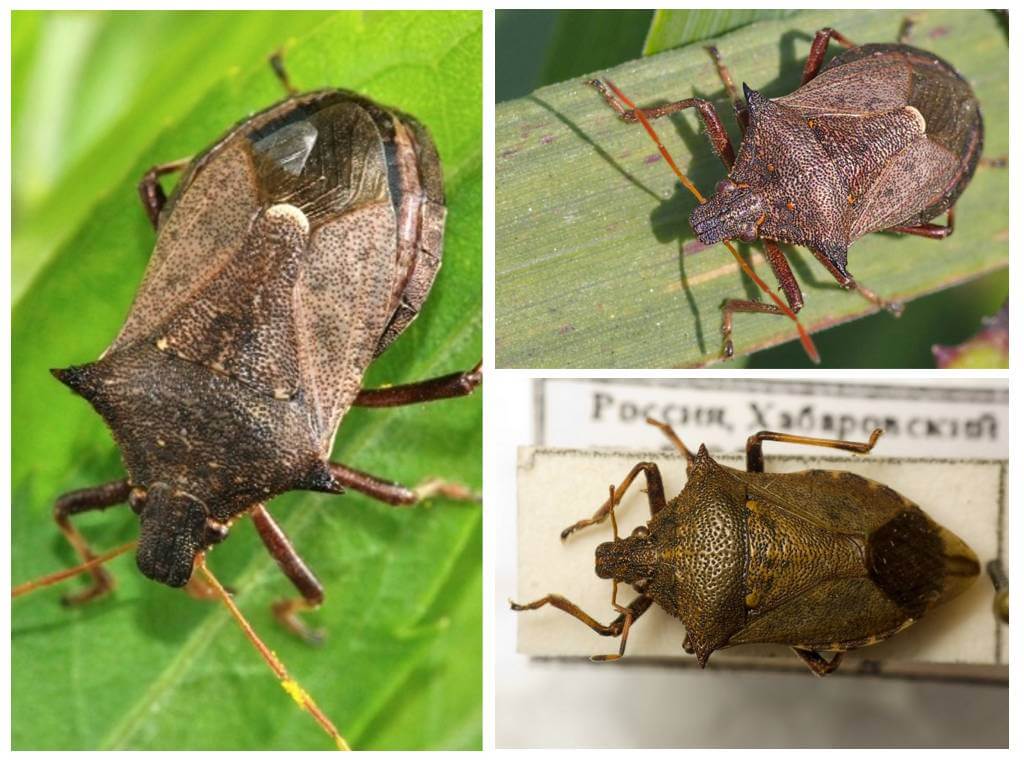
These useful bugs eat American white butterflies, Colorado potato beetle, sawfly, scoop and other pests. Many scientific research institutes and biofactories are engaged in their breeding. This kind of protection of gardens makes it possible to abandon the use of insecticides. In our country, picromeruses have taken root only in its European part.
Methods of struggle
Characteristic damage to garden crops indicate that harmful bugs are wound up in the garden. The situation is even more relevant if you happen to meet with such individuals.The only way out in this case is an immediate fight against plant parasites.
Chemicals
Plant parasites can be affected by pesticides containing insecticidal components. Organophosphate and pyrethroid agents are commonly used. They come in contact, intestinal and systemic types of action.
Actara is in great demand among consumers. Its distinguishing feature is the presence of selective action - it is harmful to pests, but it will not cause harm to useful insects. Equally popular are Kungfu, Regent, Ciperon, Bassoon, or Vantex.
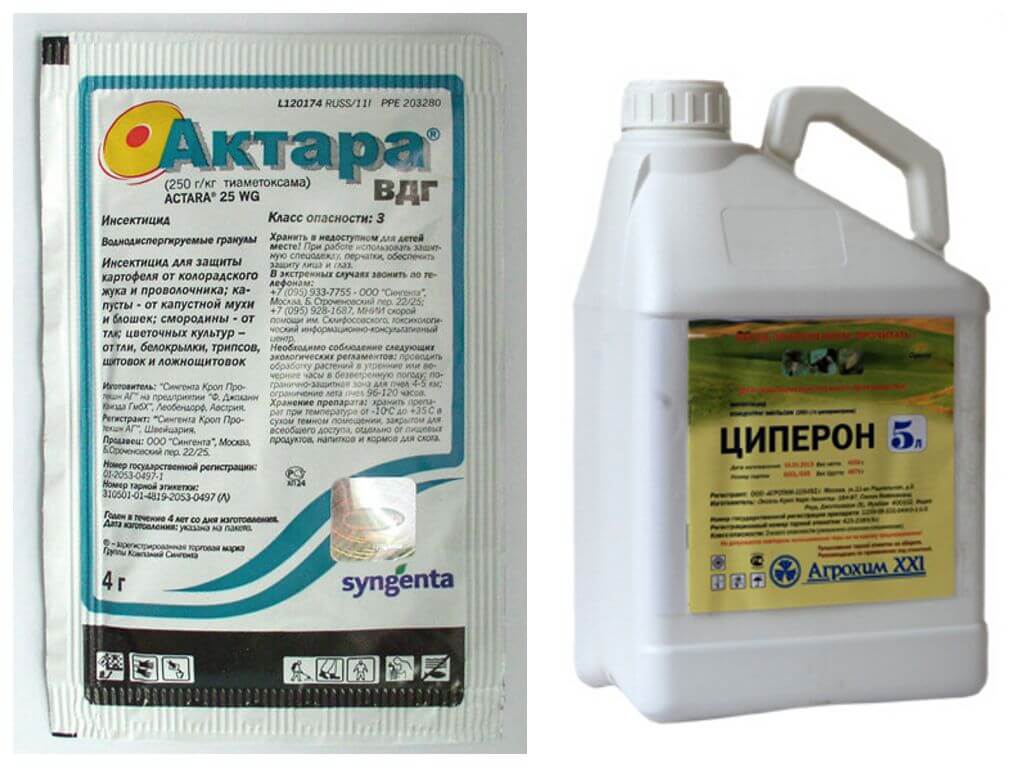
On a note!
Both sides of the sheet plate are subject to insecticide treatment. Only in this case, you can achieve a positive result and keep your crop in the country.
Chemical treatment of plants is advisable when the question arises of taking emergency measures.
Agrotechnical measures
It is not superfluous in a situation where bugs are found in the garden, events of an agro technical nature. It will help prevent the spread of pests in the garden area by timely cleaning of fallen leaves. After all, many insects hibernate in it.
No less useful in the fight against plant parasites will be the plowing of the summer cottage and the landing of tsimitsifugi or black cohosh. The uniqueness of these plants lies in their smell, which will help get rid of harmful insects.
